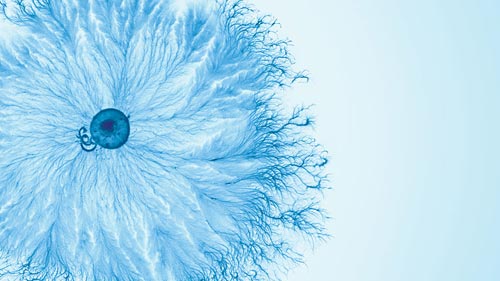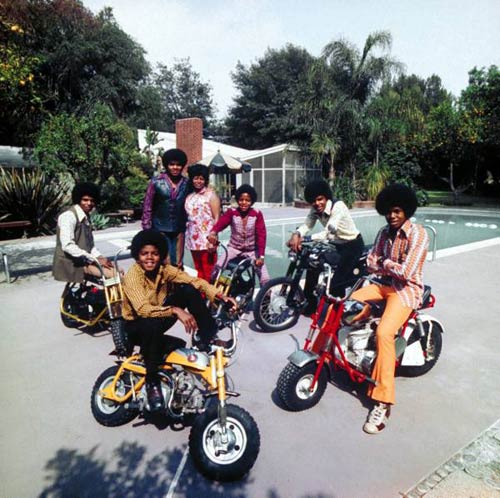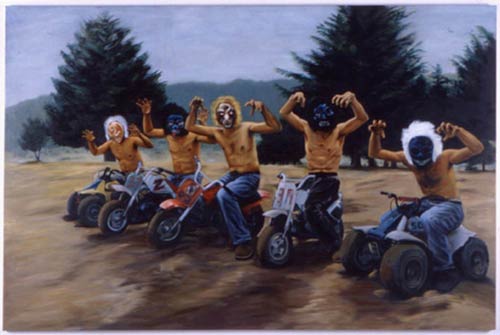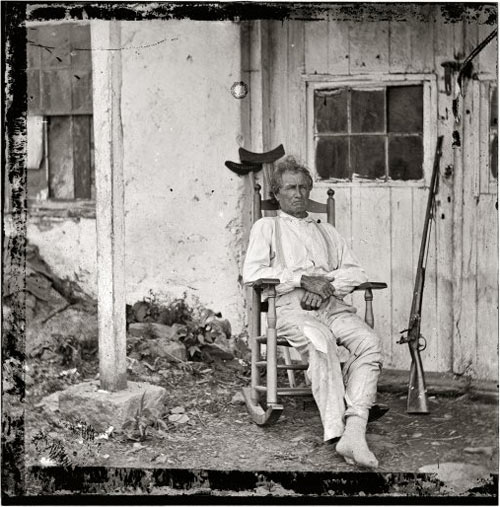Abandoned London
Photographs of an abandoned London. Turns out that the streets of London on Christmas morning are extraordinarily empty. Details here. (thx, peter)



This site is made possible by member support. ❤️
Big thanks to Arcustech for hosting the site and offering amazing tech support.
When you buy through links on kottke.org, I may earn an affiliate commission. Thanks for supporting the site!
kottke.org. home of fine hypertext products since 1998.
Photographs of an abandoned London. Turns out that the streets of London on Christmas morning are extraordinarily empty. Details here. (thx, peter)
Photos of the abandoned soundstage for The Wire.
So I found out yesterday that the soundstage for “The Wire” still existed. I wasted no time in visiting it and was there almost less than 24 hours. It’s one of my favorite TV shows ever and I had to see this before everyone ruined it. The building is also scheduled for demolition and they are going to build a super market on it.
(thx, hurty)
Is a recent Annie Leibovitz photograph shot for the 2009 Lavazza espresso calendar the worst photograph ever made?
This picture as a whole has absolutely zero connection to reality or honest depiction, but is unredeemed by any countervailing expressive or artistic purpose. And (and this puts it out in front of many other contenders) it was all done intentionally, front to back, top to bottom, money-no-object, by an army of the most talented professionals, from art director to stylists to make-up artists to baby-wranglers to lighting assistants to photographer to digital retoucher, all working assiduously in concert in pursuit of the utterly pointless.
It is a horrible photograph. Leibovitz’s recent portrait of Queen Elizabeth was also digitally stitched up…the Queen was photographed inside and later matched with a garden background. I’m not going to say that these aren’t photographs, but they aren’t the kind of photographs that I’m fond of.
The wonderful Big Picture presents part one of the year 2008 in photographs. I’ll say it again, seeing these fantastic photos large is a whole ‘nother ball game. Parts two and three to come later today and tomorrow.
Update: Part two.
Update: And part three.
In an obvious move, Time named Barack Obama their Person of the Year for 2008. But give Time credit; they got Shepard Fairey to do the cover based on his iconic poster of Obama.
Update: They’ve also compiled some of the best photos of Obama from Flickr.
Update: Here’s a video of Fairey talking about his work and how he created the Time cover.
Included in the NYPL’s recent addition to the Flickr Commons project is Changing New York, a selection of photos taken of NYC in the 1930s by Berenice Abbott as part of a government program for unemployed artists. Here are the Starrett-Lehigh Building and looking north from Washington Square…so open! And the buildings are so low too. The Cyanotypes of British Algae set is worth a look as well.
Seed Magazine has collected some of the wonderful science-themed photography which appears in the pages of the magazine into an online portfolio.

Bacteria photo by Eshel Ben-Jacob.


Top: The Jackson 5, Encino, CA, 1970. Photographed by John Olson for Life Magazine.
Bottom: “Bad Route” by Miguel Calderon, 1998. Featured in Wes Anderson’s The Royal Tenenbaums.
The challenge: create a fictitious book cover using an image from the Life magazine photo archive. Aside from the first few created in a rush, some of these are pretty good.
Seventeen-year-old Yamaguchi Otoya uses a foot-long sword to kill Japan Socialist Party leader Asanuma Inajiro on a public stage in Tokyo. Yamaguchi was upset with Asanuma’s support of a U.S.-Japan mutual defense treaty.
The Best of LIFE blog is mining Google’s Life Magazine archive and Flickr’s Commons for the best photos.
Richard Howe takes photographs of Manhattan street corners. From March to November 2006, Howe took a photo of every single street corner in Manhattan, around 11,000 in all.
I photographed each corner just as I found it, almost always as seen from its diagonally opposite corner. Some of the photographs have no people and no traffic, others are completely dominated by people or even, in some instances, by traffic; the majority are somewhere in between. Most of the photographs simply show what people were doing on the corner when I got there: crossing the street or waiting to cross it, shopping, hanging out, riding a bicycle, and so on — in short, doing what people do at almost any street corner anywhere in Manhattan.
1863 photo of John L. Burns, War of 1812 veteran and sharpshooter in the Battle of Gettysburg.

Burns, born ca. 1793, was a 70-year-old veteran of the War of 1812 when he was wounded in the Battle of Gettysburg, having volunteered his services as a sharpshooter to the Federal Army. He died of pneumonia in 1872.
And from the comments:
Mr Burns’ flintlock is at half-cock with the frizzen down, ready to ready to fire.
The language on this one might offend some, but I thoroughly enjoyed this expletive-laden anti-photographer rant: Photography is for Jerkoffs. Here’s how to be a photographer in seven easy steps:
1) Make sure you have a LOT OF FUCKING NATURAL LIGHT.
2) Make sure the natural light SOURCE is behind you
3) Make sure the flash on your camera is OFF. If you need a FLASH, it means you don’t have enough NATURAL LIGHT. (step 1)
4) Look through the viewfinder: Make sure that everything in your shot is symmetrical. If a tiny bit of it isn’t, like a bird or a queer walking down the street, that’s OK because it makes the photo “cool.” Go watch every Stanley Kubrick movie ever made if you don’t understand this. (Study Alex’s fake eyelash as the archetypal stylistic symmetry violator)
5) Take pictures of everyday shit from stupid angles but make sure it’s all SYMMETRICAL and that it isn’t MOVING.
6) Make sure YOU don’t move or have your fat black fingers in front of the lens when you push the button. (priceless tip: push the button down halfway, wait for a clicky sound, and then push it all the way in - this is the BIG photography secret that professionals don’t want you to know.)
7) Take TONS of photos of the same thing and then only use the good ones where the bird or the queer wasn’t blinking.
You’re done. You’re a fucking photographer. See how easy that is? That’s because it’s for JERKOFFS.
(via avenues)
The NY Times has photographer David Dunlap running around NYC taking updated versions of the photos he took of the city for Paul Goldberger’s 1978 guidebook to Manhattan, The City Observed: New York. Recent Now/Then comparisons include Grand Central Terminal, the corner of 59th St and 5th Ave (where the Apple Store is), and, perhaps the most striking pair of photos, the Hudson River shoreline.
Vogue Paris has an editorial in the November 2008 issue which features a 20-year-old model photographed as if she were 10, 20, 30, 40, 50, and 60 years old. The hands betray her true age in the 40, 50, and 60 shots but the 10-year-old photo is a little bit of brilliance…just the right angle and lighting. (via the year in pictures)
Wow, Google is hosting millions of photographs from Life magazine from the 1860s to the 1970s. Would have been nice to see these on Flickr instead (so that people could add tags, annotate, etc.), but this is an amazing resource. (via df)
Alec Soth asks a bunch of photographers a) when did you first get excited about photography? and b) what advice would you give young photographers?
Don’t stop questioning yourself (it’ll make you less arrogant). Push. Push, scratch, dig… Push further… And stop when you don’t enjoy it anymore… But most of all respect those you photograph…
(via conscientious)
Now that the Flip has released their handheld digital HD video camera, here’s a little rundown of the offerings currently out there and coming soon.
Kodak Zi6 - 128MB of built-in memory, expandable to 32GB, 720p, 1280x720 at 60 fps, 2.4 in. LCD, AA rechargable batteries. $180. (Video sample.)
Flip Video MinoHD - 4GB of built-in memory (~60 min of video), 720p, 1280x720 at 30 fps, 1.5 in. LCD, very slim handheld. $229. (Video sample.)
Nikon D90 SLR - expandable SD memory, 720p, 1280x720 at 24 fps for 5 minutes at a time, 3 in. LCD, and almost every single setting and control that’s available on a SLR camera. $1200. (Video samples.)
Canon 5D Mark II SLR - expandable CF memory, 1080p, 1920x1080 at 24 fps for 30 minutes at a time, 3 in. LCD, and almost every single setting and control that’s available on a SLR camera. $2700. (Video sample.)
Red One - Not going to list the specs on this one, except to to say that you can shoot whole feature length movies on this thing at a higher resolution for less money than pretty much any other camera out there, digital or otherwise. $17500. (Gorgeous video sample.)
Check out the winners of the European Wildlife Photographer of the Year 2008 competition…lots of amazing photography here. Warning: the winning image is a little disturbing for the faint of heart.
A list of final photographs taken of people before they died. Included Marilyn Monroe, Albert Einstein, and Adolf Hitler. (via cyn-c)
Photos of women bodybuilders. If you cover up the faces with your hands, they look like men in bikini tops and if you cover up the bodies, meth addicts.
A lovely photo set of New York City from the 1930s. My favorites are the crowded beach scene at Coney Island, Margaret Bourke-White’s shot of hats in the Garment District, and a shot of “the Lung Block” on the Lower East Side. In due time, that then-notorious but now-beautiful block was razed to make way for one of Manhattan’s first large apartment complexes, Knickerbocker Village which at various times housed several members of the Bonnano crime family and Julius & Ethel Rosenberg. (thx, mark)
For his Fabric of Brooklyn project, Tom Mason took photos of scenes in Brooklyn and combined them to depict super-bustling neighborhoods. Reminded me of this wonderful composite image of a busy airport by Ho-Yeol Ryu.
Filip Dujardin samples photos of buildings to create new photographs of improbable, impossible, or fantastical buildings.

These are great.
Update: More fictional architecture, this time by Philipp Schaerer. (via today and tomorrow)
Richard Renaldi’s photos of touching strangers seem a little predictable to me — white guy with black family, blue-collar guy with white-collar guy, blig black guy with white family — but still worth a look. Joerg Colberg thinks they’re amazing:
Asking two complete strangers to not only pose with each other, but to also touch each other while doing that… And this in a culture whose discomfort with touching someone you don’t know, or touching something that someone else might have touched still baffles me, even after having spent almost ten years in it! I remember I asked Richard how he actually did that. How do you ask complete strangers to pose with and touch each other? How do you do that in New York City of all places?
The act of making a photograph turns the subjects into actors, and two actors touching each other isn’t that unusual. When I look at many of these photos, I see actors and that detracts from the intimacy. Even so, I love this one.
A month after the bombing of Hiroshima in 1945, the US government imposed a code of censorship in Japan, which means that photos of the effects of the nuclear device are somewhat difficult to come by. Enter diner owner Don Levy of Watertown, MA.
One rainy night eight years ago, in Watertown, Massachusetts, a man was taking his dog for a walk. On the curb, in front of a neighbor’s house, he spotted a pile of trash: old mattresses, cardboard boxes, a few broken lamps. Amidst the garbage he caught sight of a battered suitcase. He bent down, turned the case on its side and popped the clasps.
He was surprised to discover that the suitcase was full of black-and-white photographs. He was even more astonished by their subject matter: devastated buildings, twisted girders, broken bridges — snapshots from an annihilated city. He quickly closed the case and made his way back home.
The photographs were taken by the US Strategic Bombing Survey immediately after the war and are now in the possession of the International Center of Photography. A copy of a report made by the US Strategic Bombing Survey is available online at the Truman Library.
When it looked as though Obama was going to win the election, former photojournalist Matt Mendelsohn went to the Lincoln Memorial in Washington DC expecting to find a huge crowd of celebrants.
I’d spent most of election night in front of the TV in Arlington, Va. But around 11 p.m. I couldn’t sit idle any longer, which is why I sped to the memorial. When I arrived, I found a TV crew sitting on the plaza above the Reflecting Pool, waiting, I assumed, for a mob to arrive. I approached with cameras in hand. One of them looked up and said with a slight roll of his eyes, “Nothing to see here.”
Instead he found a small group of people listening to Obama’s acceptance speech on a transistor radio and shot this wonderful picture of the scene. I can’t think of an image that better characterizes the grass-roots, get-out-the-vote, small-donations-by-millions-of-people aspect of Obama’s campaign. (via 3qd)
Update: Here’s another view of the same scene. (thx, andy)
Stay Connected